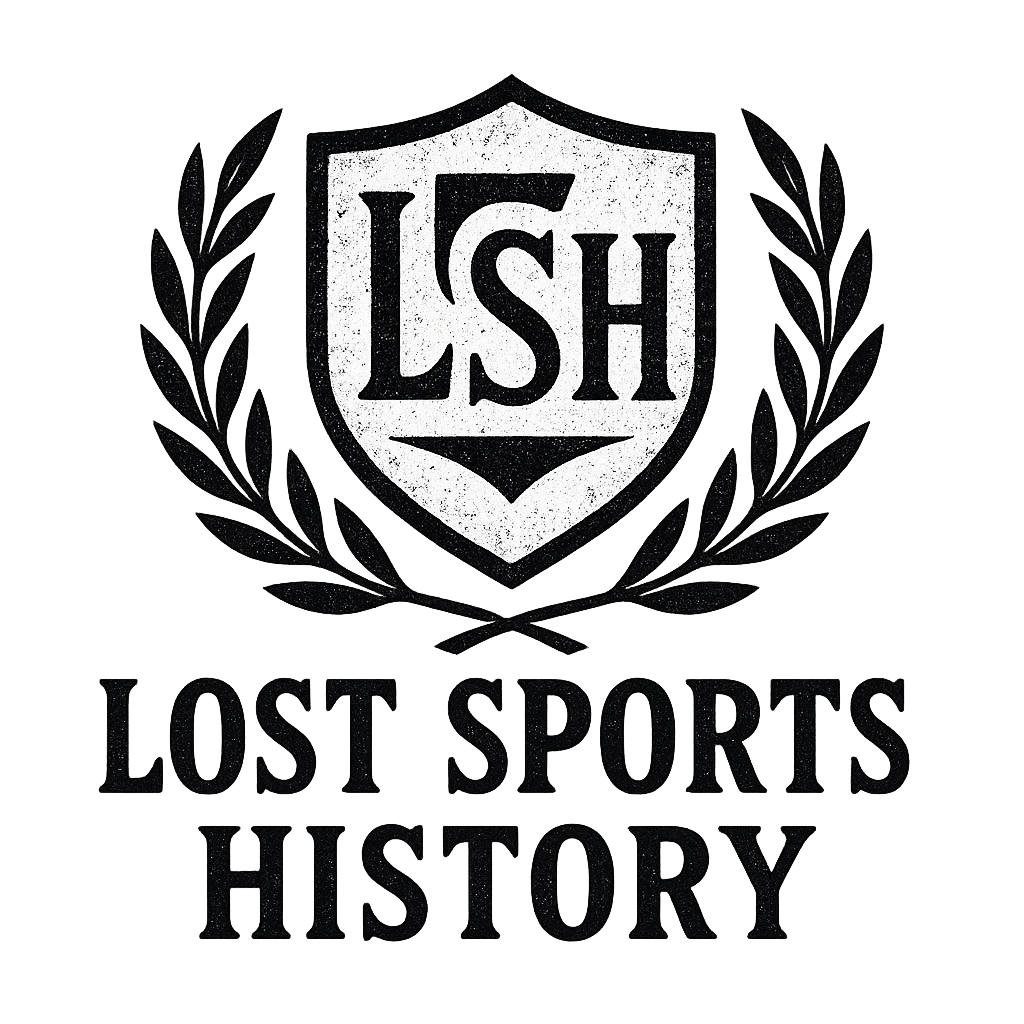Now Reading: Episkyros: The Greek Football-Like Game
-
01
Episkyros: The Greek Football-Like Game

Episkyros: The Greek Football-Like Game
Imagine a game where two teams clash on a field, throwing and catching a leather ball, using both hands and feet in full-contact action. This isn’t rugby or American football—it’s episkyros, an ancient Greek ball game that thrived over 2,000 years ago and represents the earliest example of Greek rugby origins.
What if modern sports owe their existence to these forgotten athletic traditions? The similarities between episkyros and today’s popular games are striking. Teams of 12-14 players competed to throw a ball over their opponents’ heads while defending their own territory – a basic principle that lives on in many modern sports.
Episkyros wasn’t just a pastime in ancient Greece—it reflected the Greek ideals of physical excellence, strategic coordination, and communal strength. Played during festivals in Athens and city-wide tournaments in Sparta, it united communities and showcased the Greek rugby origins that would later influence Roman harpastum and inspire elements of modern rugby and football.
The Origins and Cultural Context of Episkyros
Ancient Greece’s love for physical strength gave rise to episkyros during the classical period (500-323 BCE), a time when being good at sports was highly valued in society. This team sport came from a culture that celebrated the abilities of the human body through the Olympic Games and other athletic competitions.

Physical Education’s Importance
The Greeks believed that physical education was crucial for both preparing for war and living a healthy life. Episkyros represented their belief in working together as a team through organized team play, setting it apart from sports like wrestling or running that focused on individual achievements.
Sacred Festivals and Pan-Hellenic Tradition
Religious festivals were the main places where episkyros games were held, turning the sport into something sacred. These festivals honored gods like Apollo and Zeus, attracting thousands of spectators and participants from various city-states, thus creating a shared sporting tradition among all Greeks.
Sparta’s Annual Festival: The Most Prestigious Event
Sparta’s yearly festival became the most important episkyros competition in the Greek world. The event included:
- Multiple teams representing different regions
- Day-long tournaments with elimination rounds
- Victory celebrations honoring both winners and participants
- Traditional ceremonies blending athletic and religious elements
Archaeological Evidence of Episkyros’ Role in Social Life
Archaeological findings show that there were specific fields for playing episkyros near temples and public areas, indicating that the sport was an integral part of Greek social life. It brought together people from different backgrounds, including noble youth and common citizens, providing a unique opportunity for social interaction and community bonding.
Influence Beyond Greece
The impact of episkyros went beyond Greece itself. It reached colonies in Sicily and Southern Italy, where local variations emerged and added new tactical elements to the sport.
Understanding Episkyros: Rules, Gameplay, and Equipment
Ancient Greek art and literature reveal fascinating details about episkyros’s structured gameplay. Teams of 12-14 players faced each other on a rectangular field marked by distinctive white lines. A central line, known as the skuros, divided the field into two equal territories. Behind each team’s position, additional boundary lines marked the limits of play.
The game’s primary objective centered on a tactical battle of territory and possession. Players worked together to throw the ball over their opponents’ heads, pushing them back beyond their boundary line. This created a dynamic mix of offensive and defensive strategies, with teams constantly adjusting their formations.
Key Rules of Episkyros:
- Full-contact play allowed players to physically engage opponents
- Both hands and feet could be used to control the ball
- Teams scored by forcing opponents behind their boundary line
- Ball possession changed when the ball touched the ground
- Players could not cross the central skuros line during active play
The equipment used in episkyros demonstrated remarkable craftsmanship. The game’s focal point – the ball – consisted of carefully sewn leather filled with animal hair or entrails. Archaeological evidence suggests these balls varied in size, with some reaching dimensions similar to modern footballs.
Ancient Greek pottery provides valuable insights into the game’s equipment and field setup. Red-figure vases from the 5th century BCE depict players in active poses, wearing simple tunics that allowed freedom of movement. These artistic representations show the ball’s rounded shape and suggest players competed barefoot or in light sandals.
The game’s physical nature demanded strategic positioning and quick thinking. Teams often arranged themselves in formations, with some players specializing in throwing while others focused on defensive maneuvers. This tactical element added depth to what might appear as a straightforward ball game.
Phaininda: An Ancestor to Episkyros with Deceptive Twists
Before episkyros captured the hearts of ancient Greek athletes, phaininda ruled the playing fields with its unique blend of strategy and deception. Named after the Greek word “to deceive,” phaininda introduced tactical elements that set it apart from other ball games of its era.
The Art of Deception in Phaininda
Players in phaininda mastered the art of fake passes and deceptive movements, creating an early form of what we now call “juking” in modern sports. The game’s emphasis on misleading opponents added a psychological layer to the physical competition, making it a true test of both mind and body, much like how psychology plays a crucial role in sports today.
Other Ball Games in Ancient Greece
Ancient Greek society celebrated several other ball games alongside phaininda and episkyros:
- Apórrhaxis – A dribbling-focused game where players bounced a ball repeatedly against the ground, counting successful bounces
- Urania – Named after the Muse Urania, this game tested players’ ability to catch a ball thrown high into the air
- Sphairomakhía – A “ball-fight” that combined elements of wrestling with ball handling skills
These games served distinct roles in Greek society:
- Training young warriors in agility and coordination
- Teaching strategic thinking through competitive play
- Building social bonds during religious festivals
- Developing physical fitness for military service
Archaeological Evidence of Ball Games
Archaeological evidence reveals specialized training areas for these games in ancient Greek gymnasiums. Wall paintings and ceramic vessels depict players engaging in various ball sports, showcasing their significance in daily life. Such findings highlight the intersection of archaeology and our understanding of ancient sports.
Influence on Episkyros and Beyond
The tactical elements of phaininda influenced the development of episkyros, adding layers of complexity to what would become one of the most popular team sports in ancient Greece. The deceptive techniques pioneered in phaininda can be traced through the evolution of ball games, appearing in various forms across different cultures and time periods.
The Enduring Legacy of Episkyros: From Roman Harpastum to Modern Football Codes
The Romans, known for adopting and adapting Greek customs, transformed episkyros into their own distinctive sport: harpastum. The name itself reveals the game’s aggressive nature – derived from the Greek word meaning “snatched away,” harpastum maintained episkyros’s full-contact elements while introducing new tactical dimensions.

Harpastum as a Military Training Exercise
Roman soldiers spread harpastum throughout their conquered territories, establishing it as a military training exercise. The game’s emphasis on physical prowess, strategic thinking, and teamwork aligned perfectly with Roman martial values. Archaeological evidence shows dedicated harpastum courts in military camps across Europe, suggesting its role in maintaining troop fitness and morale.
Episkyros’ Influence on Modern Sports
FIFA’s historical records acknowledge episkyros as a significant predecessor to modern rugby league. Key elements from the ancient Greek game survive in today’s sports:
- Long passes – The practice of throwing balls over opponents’ heads
- Physical contact – Full-body engagement between players
- Team formations – Strategic positioning of players across the field
- Boundary lines – Field markings defining play areas
These features found their way into various modern football codes. Rugby’s scrums mirror the close-quarters confrontations of episkyros, while American football’s passing plays echo the ancient Greeks’ overhead throws. The evolution from episkyros through harpastum to contemporary sports demonstrates how athletic traditions adapt and persist across millennia.
The Impact of Episkyros on Team Sports
The game’s influence extends beyond just rules and gameplay. The emphasis on teamwork and strategic planning in episkyros laid groundwork for modern team sports’ organizational structures. Sports historians trace the development of specialized player positions and coordinated team movements to these ancient roots.
Rediscovering Episkyros: A Forgotten Athletic Tradition Worth Exploring Further
Ancient Greek sports heritage holds countless untold stories waiting to be discovered. Episkyros represents just one fascinating thread in this rich tapestry of athletic traditions. The game’s blend of strategy, physical prowess, and social significance offers valuable insights into how sports have evolved through millennia.
Modern sports enthusiasts can explore this legacy through:
- Archaeological Museums: Ancient artifacts and artwork depicting episkyros players and equipment
- Historical Texts: Translations of Greek literature describing game rules and cultural context
- Academic Research: Studies on ancient Greek physical education and sports development
- Digital Archives: Online collections showcasing sports-related artifacts and documents
The rediscovery of episkyros opens doors to understanding other forgotten games like trigon, palla, and follis. These ancient sports shaped athletic traditions across cultures, creating a complex web of influence that stretches into our modern sporting landscape.
Interestingly, the preservation of episkyros knowledge reminds us that today’s popular sports emerged from centuries of athletic innovation and cultural exchange. This is evident when we look at the 10 ancient sports that inspired today’s Olympic games, which include some aspects of episkyros.
Moreover, the exploration of ancient sports also unveils some banned and forbidden games too dangerous to play, highlighting the extreme nature of some historical athletic practices. For instance, the study of ancient warriors training reveals the rigorous physical preparation that was part of their training regime, which often intersected with their sporting activities.
Furthermore, a dive into the realm of the deadliest sports in history uncovers extreme challenges faced by athletes in ancient times. These narratives not only enrich our understanding of episkyros but also provide a broader perspective on the evolution of sports over time.
Conclusion
Episkyros is a remarkable reminder of humanity’s enduring love for competitive team sports. This ancient Greek game laid the groundwork for modern rugby and football with its innovative elements – from tactical teamwork to full-contact play and strategic ball handling.
The game was more than just an athletic competition; it became a part of Greek society. Religious festivals were filled with the excitement of episkyros matches, and Spartan city celebrations demonstrated how the game could bring communities together and strengthen social connections. However, like many sports, it had its fair share of rule-bending incidents.
The legacy of episkyros lives on in today’s sporting world:
- The tactical passing and team formations
- The emphasis on physical strength and strategic thinking
- The combination of athletic skill and social celebration
If you’re feeling adventurous, why not gather some friends, mark out your playing field, and experience the thrill of episkyros firsthand? Alternatively, you could explore museum exhibits, historical texts, and archaeological findings to further delve into the rich history of sports.
It’s fascinating to note that many aspects of episkyros can still be seen in our modern football games. A comparative analysis between ancient and modern football games can be found here. Moreover, while we reminisce about these ancient games, it’s essential to remember that some have unfortunately faded into obscurity. This article sheds light on lost sports of the ancient world, which is an intriguing read for any sports history enthusiast.
















